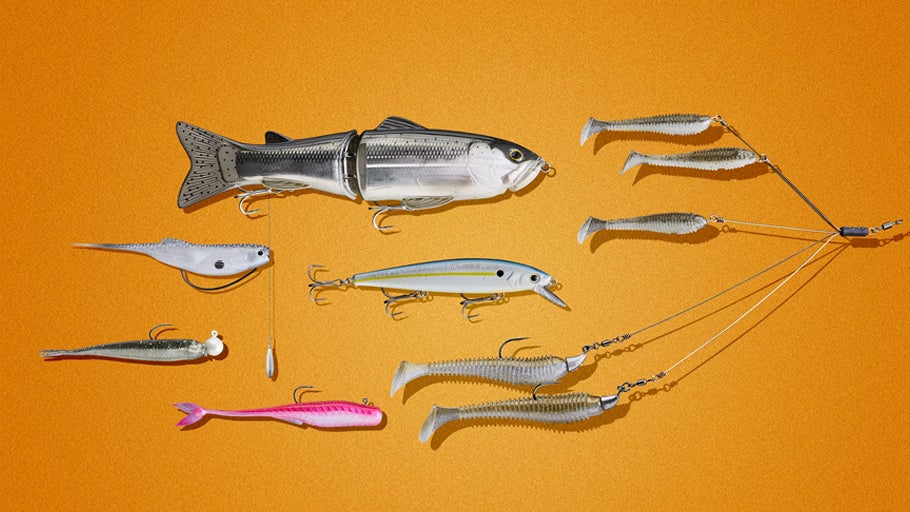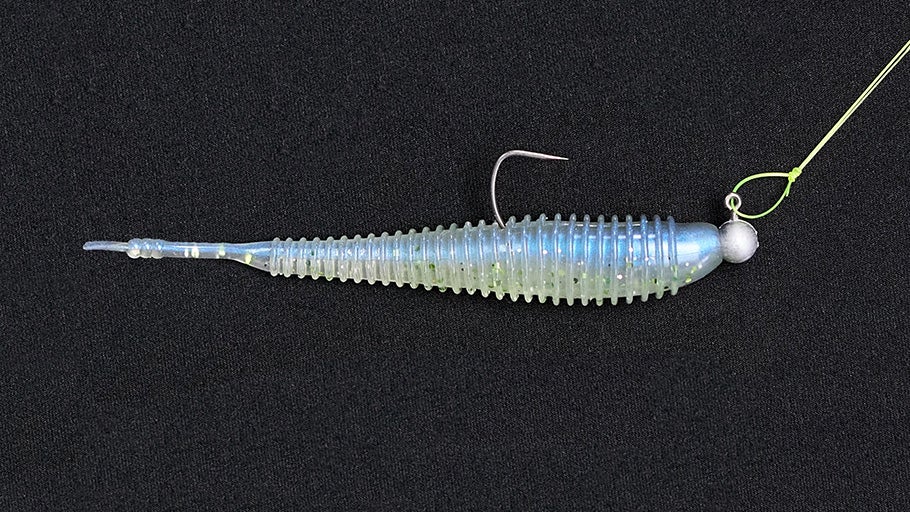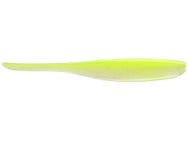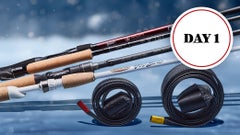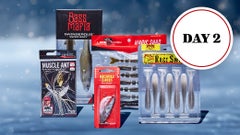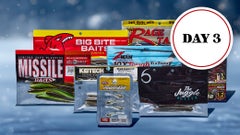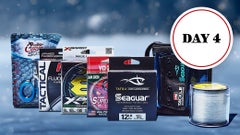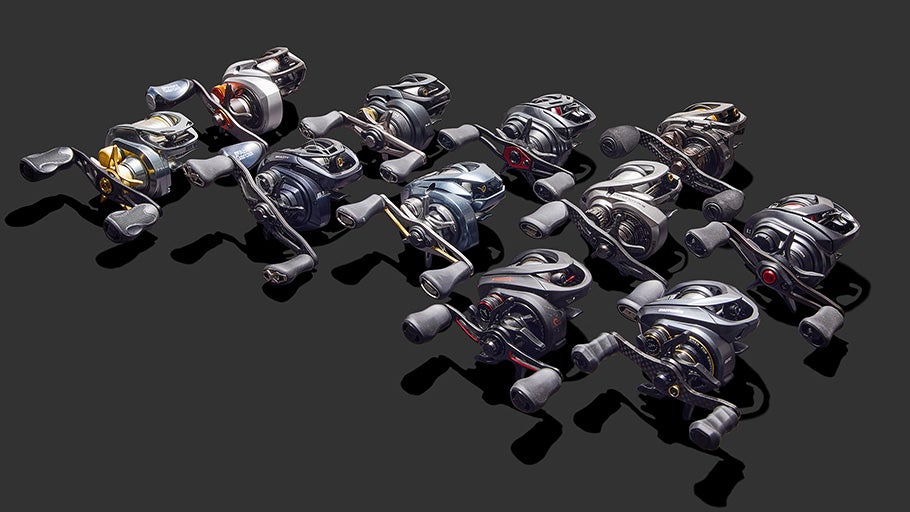
BFS For FFS
Looking Forward
Over the last decade, bass fishing has seen a steady march of innovation across every aspect of the sport, but arguably none more impactful than the introduction of live sonar. Commonly referred to as Forward Facing Sonar (FFS), this revolutionary technology provides real-time feedback of what’s going on below the water’s surface, allowing anglers to spot bass hiding in brush piles, shading underneath docks, and generally just swimming around in open water.
One of the greatest advantages provided by live sonar is its ability to narrow the focus on hard-to-target bass that are suspended off points or roaming out in open water chasing schools of baitfish. While traditional tactics, like a jig, crankbait, or underspin might work some of the time, many anglers have discovered that these fish are highly susceptible to a bite-sized baitfish presentation placed in exactly the right spot. This approach has spurred a landslide of baits, including a countless number of jighead minnows (soft plastic swimbaits paired with a jighead), adaptations in JDM tactics like hover strolling and mid-strolling, and boatloads of tiny jerkbaits.
The common denominator for these presentations is that they often require small, lightweight baits that can be tough to cast. Most anglers will inherently reach for spinning tackle, which is undoubtedly always a great choice. However, sneaky anglers looking to unlock the full potential of these baits might consider utilizing a bait-finesse setup—specialized casting gear engineered for super-light baits. In particular, bait-finesse casting reels have seen significant technological advancements in recent years, with these super-tuned reels offering several key advantages over spinning reels, such as improved casting efficiency, accuracy, and bait control.
Efficiency
The power of efficiency in a tournament setting cannot be stressed enough. Highly efficient tournament anglers, most notably Kevin Van Dam, have a long history of proving time and time again how effective an efficient angling style is for catching more bass and cashing checks. If you can increase the number of effective casts you make in a day, over time you will catch more fish—it’s just that simple.
Properly tuned bait-finesse gear allows anglers to boost efficiency by reducing line twists, improving accuracy, and often enhancing the distance/speed of every cast. Throughout a long season of fishing, this will tip the statistical scales in your favor, providing a slight edge over the competition. Ditching your spinning setup may seem a touch extreme for a small increase in performance, but experienced tournament anglers know that a little advantage can be all it takes to turn a second place finish into a big payday.
Accuracy & Stealth
While advanced real-time sonar is fairly precise and responsive, it still relies on the angler to deliver a pinpoint cast to be effective. The farther out your sonar is tuned to scan, the wider the sonar cone becomes. So, even though that little dot at 60 feet looks like it's directly in front of your transducer, it can be 5- to 6-feet to the left or the right. This emphasizes the importance of both casting distance and accuracy, which a finely tuned bait-finesse reel delivers in spades.
On the opposite end of the spectrum, when the boat and/or fish are moving, it's common to make short, quick pitches in order to get your bait in front of a target before it disappears off the screen. While pitching with a spinning setup is possible, it's clunky in comparison to casting gear. With a BFS reel, those short casts become as effortless and as accurate as pitching with a half-ounce jig on 20-pound test.
Casting gear also allows you to decrease your bait's speed towards the end of the cast, rather than abruptly stopping it with a bail or feathering the line with your hand. This reduces splash and adds to your overall stealth, which can be critical when targeting suspended, already-spooky fish.
Bait Control
Tricking that pixelated blob on your screen into biting can be just as frustrating as “old school” fishing. Whether you rely on a strolling bait, jighead minnow, or a spybait to fool fish with live sonar, all of these downsized baits rely on fine input from the angler to coax a strike. While actively feeding fish may chase down your bait from a distance, fish that are less active or more educated may need the bait placed just above their nose multiple times before they decide to nibble.
To regulate the line release from a spinning reel, you either have to open/close the bail or feather the line by hand. In both scenarios, your bait stops and lands abruptly, making it easy to stop shy of your target or overshoot it all together. Bait-finesse gear allows you to better control how your bait lands and its sink rate, making it easy to run your bait just above your target or right across their face. The ultra light and light powers of bait-finesse rods also make it easy to impart delicate movement without overworking the bait.
BFS Casting Rods
Parting Thoughts
When paired together, BFS and FFS creates a highly effective duo that allows anglers to precisely target fish with a lightweight presentation that will fool the largest and most seasoned bass. We have personally found that there are advantages to be gained, especially for hardcore tournament anglers when switching your spinning “scope” rod to a bait-finesse setup. For non-tournament anglers and spinning rod enthusiasts, the sheer fun factor is worth the investment alone. When every fish feels like a big one, it’s a very good day!
Favorite Baits - minnows
Favorite Baits - Jigheads & Underspins
Favorite BFS Baits - Hardbaits
Related Articles

